




Lungs and the Human Respiratory System Function for Kids
Lungs are the main part of our respiratory system and mainly are responsible for the exchange of gases in our body.
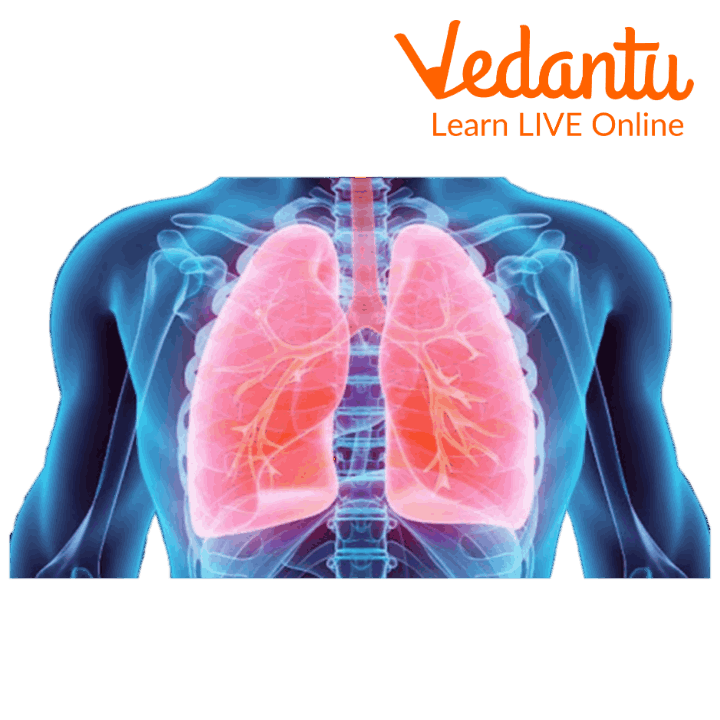
Human Lungs
The respiratory system in humans mainly consists of two parts, namely: the conducting part and the exchange part. The conducting part begins with the nostrils and then follows in the sequence: nasal chamber-> pharynx ->larynx-> trachea -> bronchi -> bronchiole whose terminal ends open into the lungs as alveoli which form the exchange part.
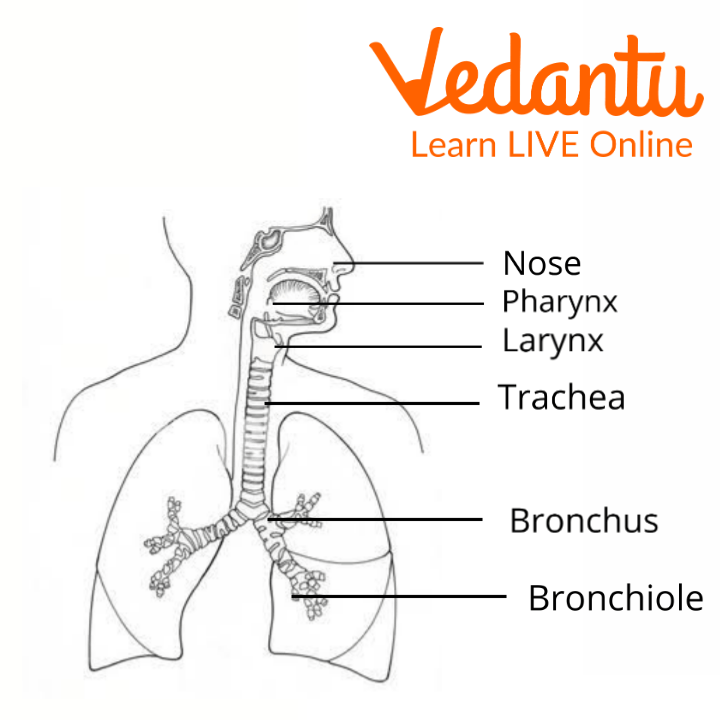
Respiratory System
The conducting part is responsible for transferring air from the outside of the body to the main site of exchange which is the alveoli, where the exchange of air takes place, that is oxygen from the atmosphere enters into the bloodstream the carbon dioxide produced by the tissues leaves the body.
Information about Lungs
The lungs are situated inside the thoracic cavity.
We have two lungs, the right and the left lung.
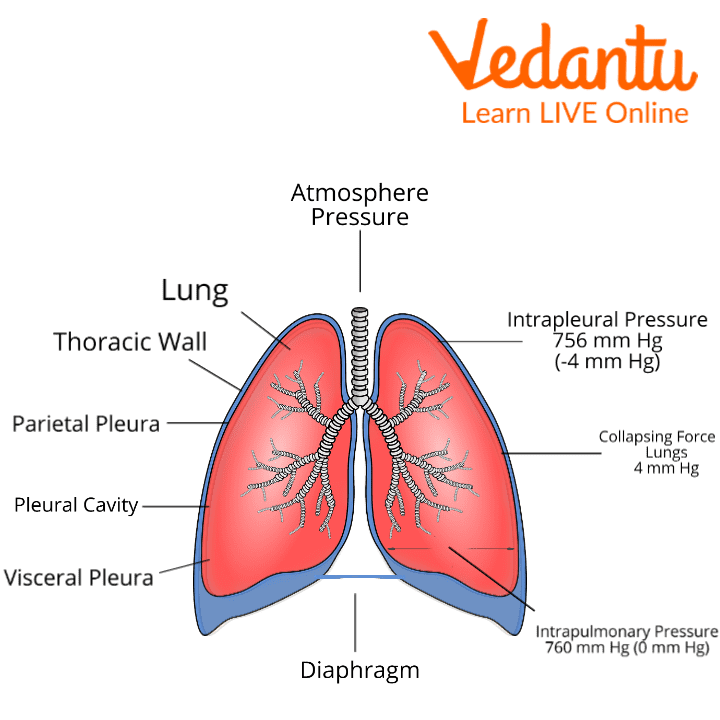
Two Lungs in The Human Body
The left lung has three lobes, whereas the right one has only two
The left lung is slightly smaller than the right one.
People with larger lung capacity can send oxygen faster through their body
Our respiratory system is divided into two parts: the conducting part and the exchange part.
Lungs from the exchange part.
The lungs expand when we breathe in and they relax and return to their original positions resulting in us breathing out.
Breathing in the air requires more energy than breathing out.
Lungs Function for Kids
The lungs form the sole part of the exchange part of our respiratory system, thus their main function is to help in the actual exchange between the gases in our body. They help the oxygen from the atmosphere in entering our bloodstream and help the carbon dioxide produced by our body to leave our body.
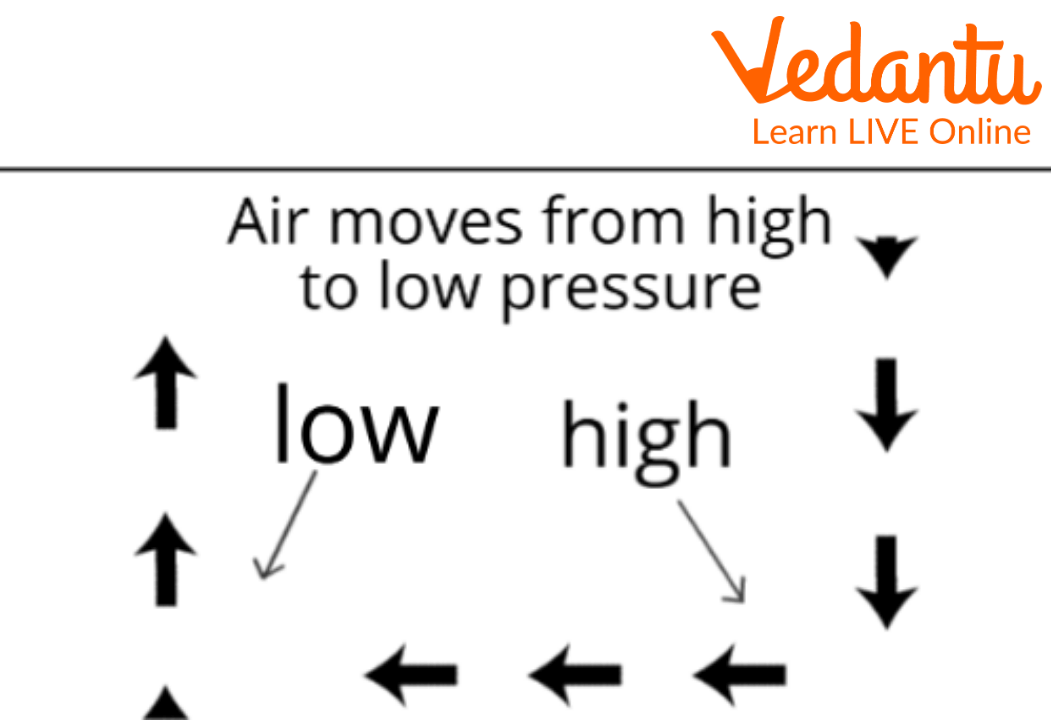
Air Travels from High-pressure Area to a Low-Pressure Area
How Do the Lungs Work?
We breathe in two steps:
Breathing in: Inhaling
Breathing out: Exhaling
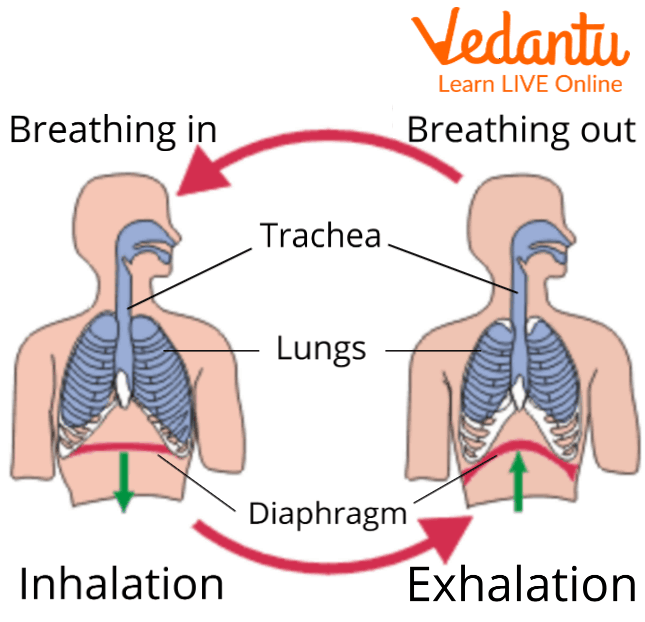
Breathing in and Breathing Out
Inhaling
Inhaling is the process of breathing in the oxygen from the atmosphere. The air movement, may it be to the lungs or from the lungs is based on the pressure difference, which is created between the lungs and the atmosphere. Air always moves along the pressure gradient that is from an area of higher pressure to an area of lower pressure.
For inhalation, the volume inside the thoracic cavity increases; thus the pressure, being inversely proportional to volume, decreases. Now the pressure inside the thoracic cavity is less than that in the atmosphere thus the air from the atmosphere rushes in and we inhale.
Exhaling
Once we have breathed in the air, all the muscles in the thoracic cavity relax and go back to their original positions; thus the volume of the thoracic cavity decreases, increasing the pressure. Now the pressure of the air inside the thoracic cavity is more than that in the atmosphere thus the air rushes out, resulting in us breathing out.
Lung Facts for Kids
Lungs are the only organs that can float on water.
We can live without one of our lungs.
We can increase our respiratory capacity by regularly exercising .
A healthy human breathes approximately 11000 litres of air every day.
A healthy adult breathes approx 12-16 times per min.
Pulmonology is the study of diseases of the lungs.
Children and Women can breathe faster.
Smoking is one of the leading causes of lung-related problems.
Yawning helps us in breathing in a larger amount of air.
Sample Questions
State Whether the Statements Mentioned Below are Correct or Not.
1. The human respiratory system is divided into three main parts.
Ans: False. The human respiratory system is divided into two main parts.
2. The lungs are the main nervous organs of our body.
Ans: False. The lungs are the main respiratory organs of our body.
3. Most fish have gills for breathing.
Ans: True
4. Some snails have lungs for breathing.
Ans: True
5. Air flows from an area of higher pressure to that with lower pressure.
Ans: True
6. Lungs can float on water.
Ans: True
7. The left lung is bigger than the right one.
Ans: False. The left lung is smaller than the right one
Learning by Doing
Complete the following statements by filling in the blanks with the most appropriate answers:
1. ________ are the main breathing organs in humans.
Ans: Lungs
2. A healthy person breathes approximately _____ times in a min.
Ans: 12-16
3. ___________ part is the area where the actual exchange of air takes place.
Ans: Exchange
4. Lungs are situated in the ___________ cavity.
Ans: Thoracic
5. During inhalation, the volume in the thoracic cavity ___________.
Ans: Increases
6. The opening of the conducting part is ________.
Ans: Nostrils.
Summary
In this article, we have learnt that the lungs are the main organ for breathing in almost all mammals and some snails and fish. The human respiratory system broadly consists of two parts: the conducting and the exchange part. We breathe in two steps: inhaling and exhaling. During inhalation the volume of the thoracic cavity increases and during exhalation it decreases. We have two lungs, the right and the left one; the left one is a little smaller than the right one to accommodate the heart.
FAQs on Lungs for Kids - Common Facts on Lungs
1. Can we live with only one functional lung?
Yes, we can survive with only one functional lung. However, the effectiveness will decrease but we can survive without one lung.
2. Are the two lungs equal in size?
No, the two lungs are not equal in size; the left lung is slightly smaller than the right one to accommodate the heart.
3. What is the effect of age on the functioning of lungs?
With age, the lungs hold in less amount of air at a time.









